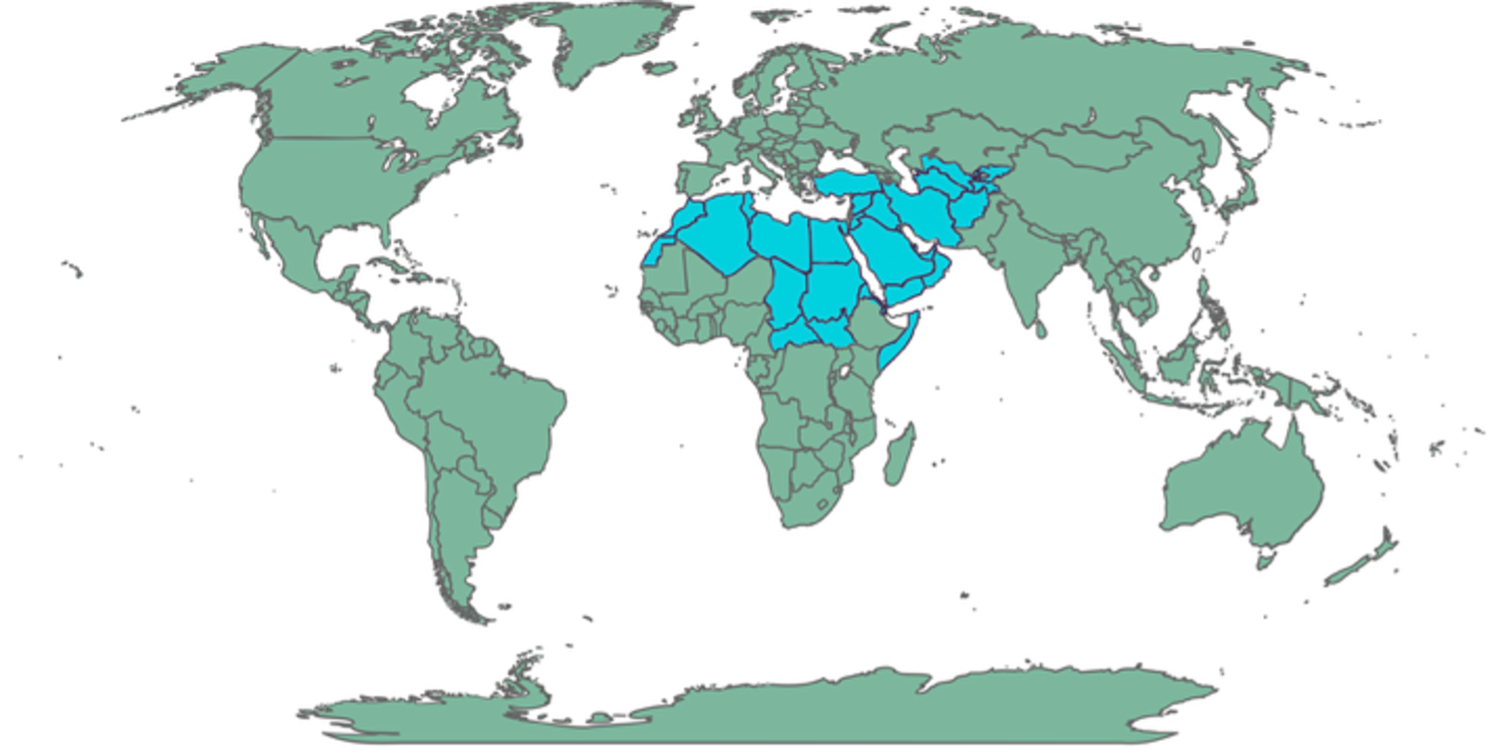Support Page Content
What is SWANA?

SWANA seeks to pull together the rich and incredible history, art, and culture of a region that has historically had labels (such as "Middle East") applied that frame other parts of the world in relation to Europe, with control and colonization in mind at the time of their inception. The abbreviation stands for Southwest Asia and North Africa. The SWANA Center was established to serve the unique needs of Southwest Asian and North African students while also engaging the entire campus community. It provides a space where SWANA students can see themselves represented and supported, while also fostering education, awareness, and dialogue about SWANA identities and experiences. At its core, the Center acts as a hub for building community and connection across the broader student body.
Some of the countries that fall under this banner include Egypt, Morocco, Algeria, Libya, Sudan, Tunisia (in North Africa) and Turkey, Syria, Palestine, Lebanon, Jordan, Iraq, Iran, and Afghanistan (in Southwest Asia). Some of the countries that fall under the SWANA banner include Egypt, Morocco, Algeria, Libya, Sudan, and Tunisia (in North Africa), as well as Turkey, Syria, Palestine, Lebanon, Jordan, Iraq, Iran, and Afghanistan (in Southwest Asia). It is important to note that no single definition of the SWANA region exists, and boundaries vary depending on context. Unlike the term “Middle East,” which carries political and colonial baggage, SWANA emphasizes the region’s own geographic framing and its diversity. While many people in the region do identify as Arab, this is only one of many ethnolinguistic identities present. SWANA also encompasses Amazigh, Kurdish, Armenian, Assyrian, Coptic, Druze, and many other groups, reflecting a complex and vibrant cultural landscape that resists simple categorization.
SWANA was coined by activists seeking to decolonize terms in the 1990s. In recent years, the acronym gained traction and popularity through university spaces promoting advocacy for marginalized groups. Today, use and visibility has spread further through social media.
Variations of SWANA are also in use, including MENA (Middle East and North Africa), SSWANA (South and Southwest Asia and North Africa), and MENASA (Middle East, North Africa, and South Asia). All of these terms refer to the same geographic region, but the framing differs. “Middle East” is the most widely known, yet it reflects a Eurocentric perspective. By contrast, SWANA is a decolonized term that emphasizes the region on its own geographic terms rather than its relation to Europe.
There is still progress to be made. In 2024, the U.S. Census Bureau announced that MENA will be included as a new identity category on the next Census. While this marks an important step, some anticipate that SWANA may eventually serve as a more accurate descriptor. Because centers and resources specifically for SWANA-identifying people are relatively new they often face challenges in securing adequate funding and institutional support. Greater awareness of related issues is also needed to ensure these communities receive the visibility and resources they deserve.
The countries within the SWANA region are rich with history and tradition. We hope this introduction to the diverse cultures of SWANA inspires you to visit the SWANA Center at Sac State and explore the region more deeply.
Bibliography
Bureau, U. C. (2024, December 20). Reporting of Middle Eastern and North African Responses in the 2020 Census Race Question. Census.gov. https://www.census.gov/library/working-papers/2024/demo/pop-wps-108.html